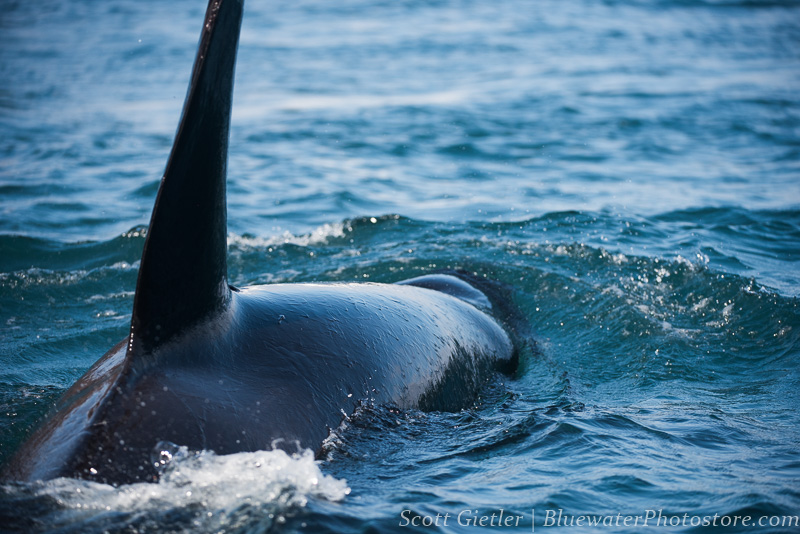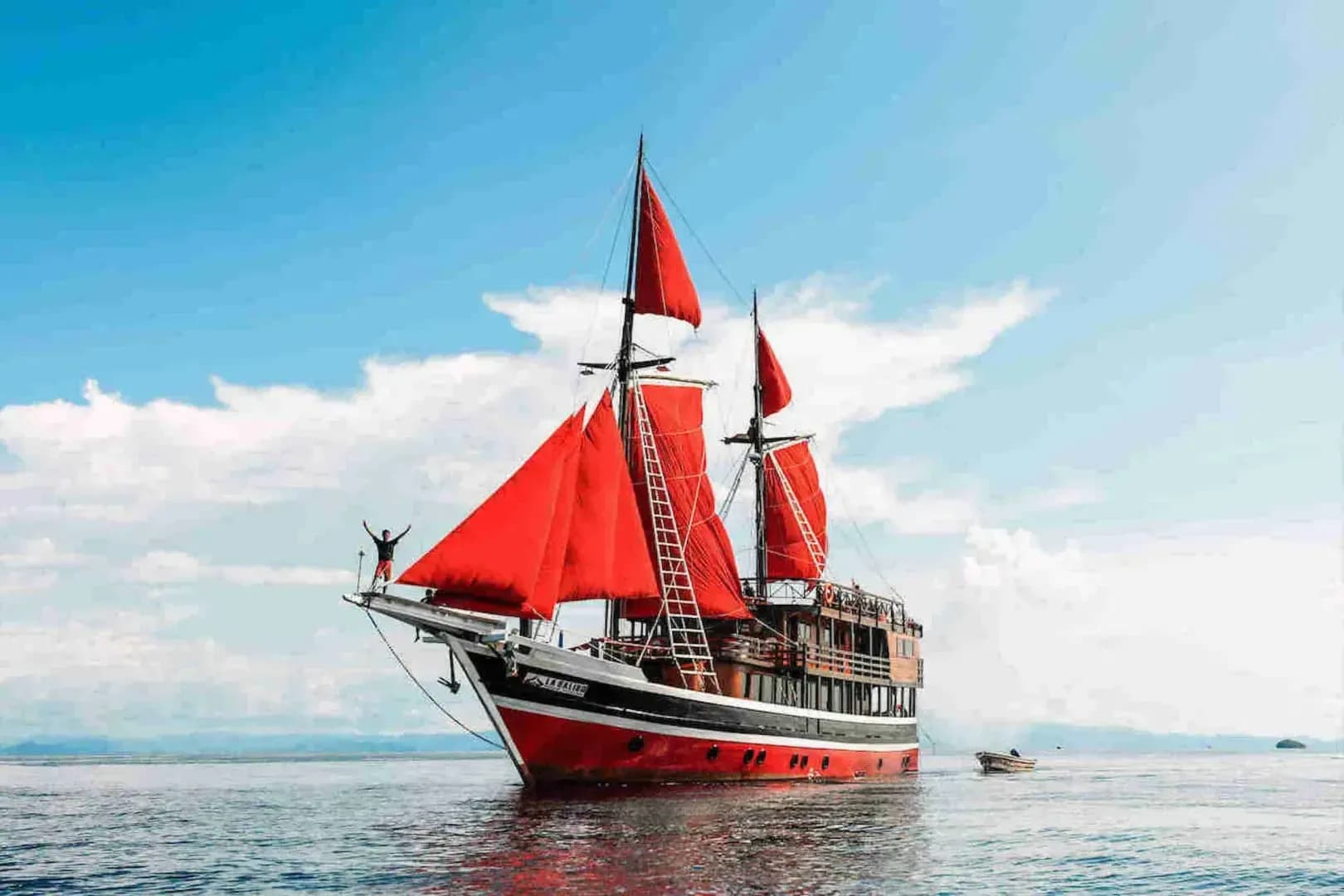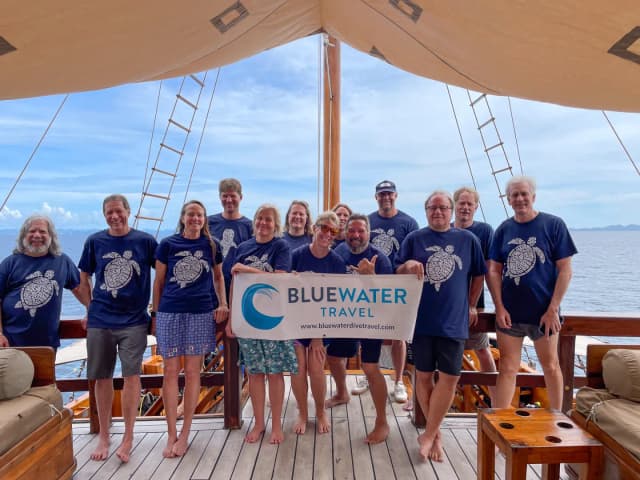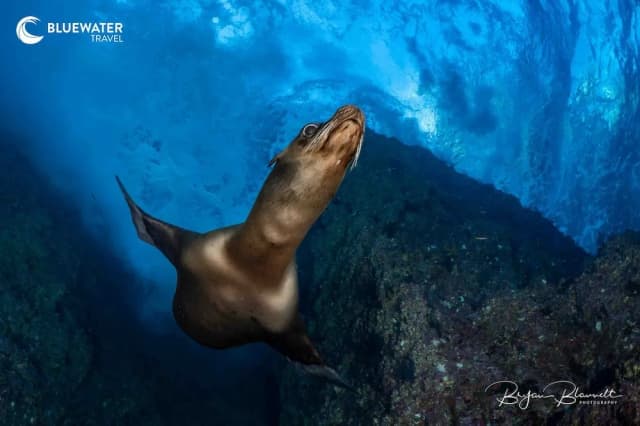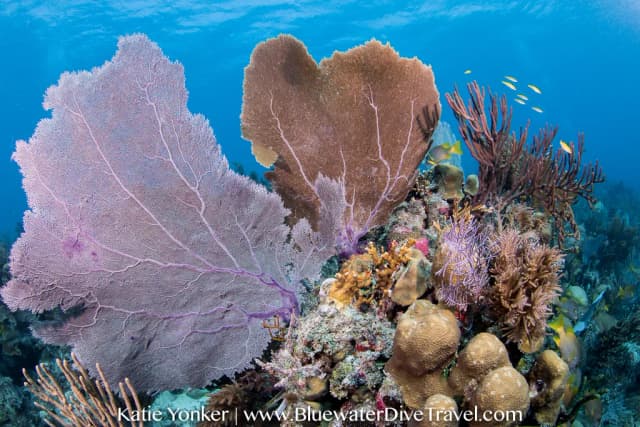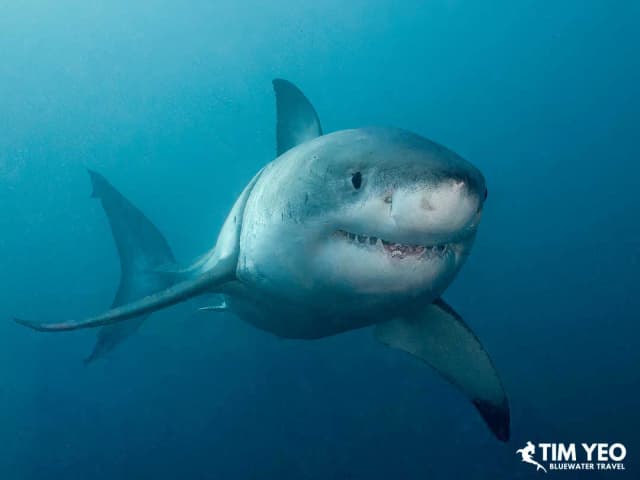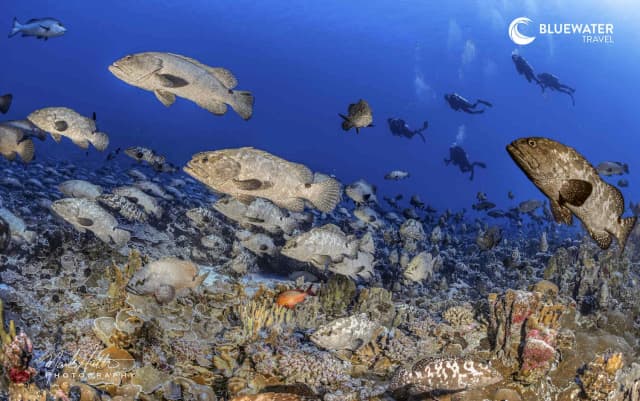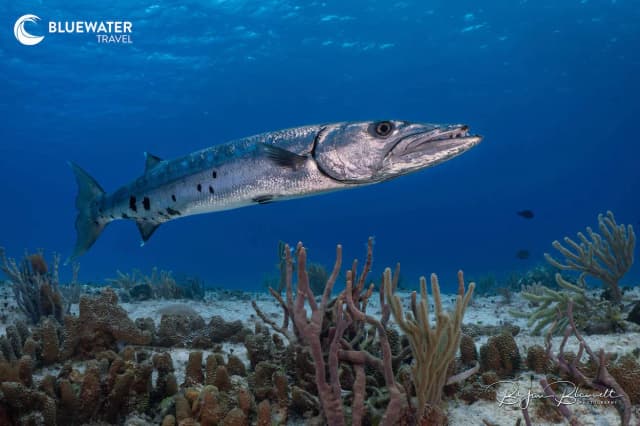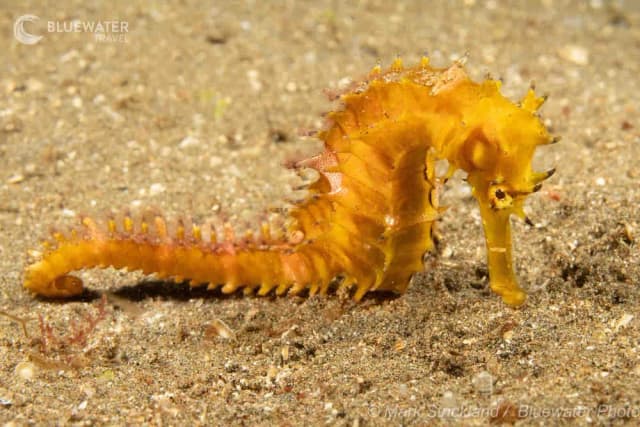Galapagos Dive Report & Underwater Photo Essay
By Scott Gietler - Click On Photos For Larger Views
The is part 2 of a 2-part Galapagos report. I wrote the first Galapagos trip report here, since then I've been back a second time. The Galapagos did not disappoint; in fact, it was the best diving we had ever done in our life. Schooling hammerheads on most dives, mola mola, marine iguana, penguins, orcas, yellowfin tuna, mantas, and whale sharks made every other dive spot in the world pale in comparison.
We are now complete Galapagos 'addicts' and will return again and again. Find out water temps, conditions, what marine life you see, and much more in our trip recap. This is a destination you truly must visit in your lifetime, while you can. Wolf & Darwin have the highest shark biomass of any location in the world, and you experience it on every dive there.
We ran several Galapagos dive trips this year, and they were truly a trip of a lifetime for the guests. Please enjoy these photos, and we hope you can join us on one of our 10-night Galapagos liveaboard trips in April 2017, Jan 2018, or May 2018.
All photos below were taken in 2017. You can easily see all of these sights on a single trip, except for the Orcas underwater, which only happened on one of our trips.
Galapagos Water Temps
Water temps in the Galapagos vary from 60F to 82F. Wolf and Darwin are the warmest islands, while Punta Vicente Roca and Fernandina are the coldest. The warmest waters are from Jan to May, the coolest from July to Nov. Divers generally bring a 5mm wetsuit in the warm season, a 7mm in the cold season, and always a hooded vest. Darwin and Wolf can be comfortably dived in a 3mm wetsuit in warmer months.
On The Boat - The Galapagos Master
We use the Galapagos Master for our 10-night trips, formerly known as the "Deep Blue." The boat is large, spacious, and comfortable. The dive deck is well laid out, and getting into the panga boats is easy. Each panga carries 8 guests and 1 dive guide. The food was good, served buffet style, and dietary restrictions were accommodated.
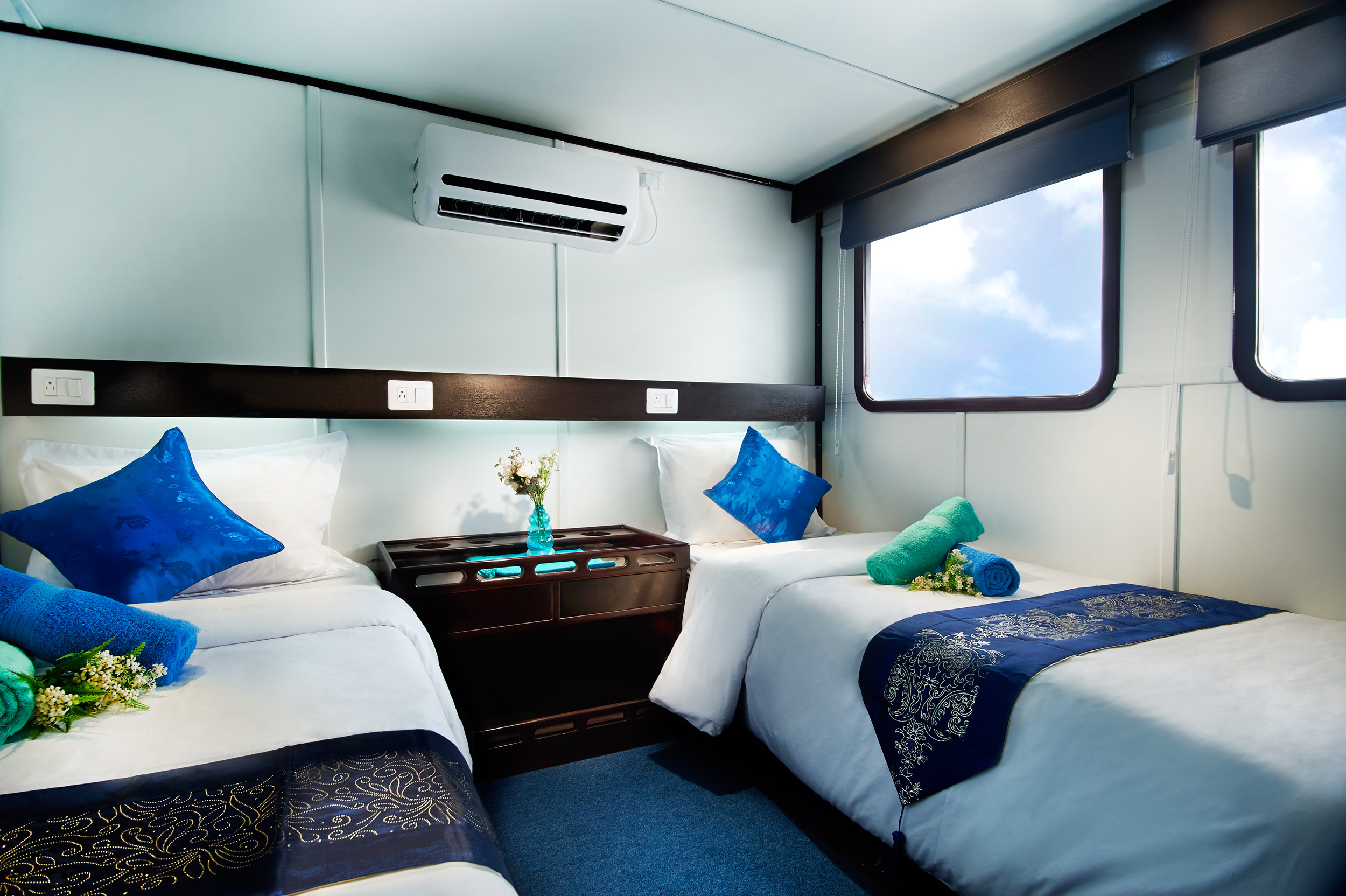
There are 4 lower deck and 4 upper deck cabins, all similar in size, with beds large enough for someone 6ft tall. The main lounge is spacious with couches and high ceilings, perfect for relaxing, photo editing, and dive briefings.
Topside Excursions
On North Seymour Island, we saw land iguanas, blue-footed boobies, sea lions, sally lightfoot crabs, and frigate-birds. These animals are great for behavioral photography, including dive-bombing your head if you're not careful!
We also arranged a land tour to see Galapagos Tortoises. Bring both wide-angle and telephoto lenses to capture these gentle giants.
Panga rides were productive, offering views of orcas, dolphins, penguins, and marine iguanas. Sometimes we went "dry" to photograph animals on land; other times, we were in snorkel gear, ready to jump in at a moment's notice.

Marine Iguana with a turtle in the background. They only enter the water at midday to feed on algae, gripping rocks with their claws. During El Nino events, up to 90% of marine iguanas can die, though they fared better this year.

Schooling mobula rays, one of the many breathtaking sights during our dives.
LEFT: Schooling Mobula Rays, another "once in a lifetime" sighting at Cabo Marshall. The mobula rays are quite shy and can pass by at depths from 20ft to 100ft as they search for food.
RIGHT: Mola mola getting cleaned. We saw Mola mola on every trip, definitely one of the highlights of a Galapagos trip. They enjoy getting cleaned in the coldest waters, usually from 59-65F, so bundle up. Deepwater too, around 100ft deep. The Mola mola we saw were about 10ft long on average.
LEFT: Hammerhead sharks, photo by Ron Watkins. Hammerheads come in close to be cleaned.
RIGHT: Schooling hammerheads overhead. Darwin and Wolf Islands have the largest shark biomass on the planet. Hammerheads come shallow to get cleaned. Silky and Galapagos sharks are also common but very shy and dislike bubbles, so getting close requires luck.
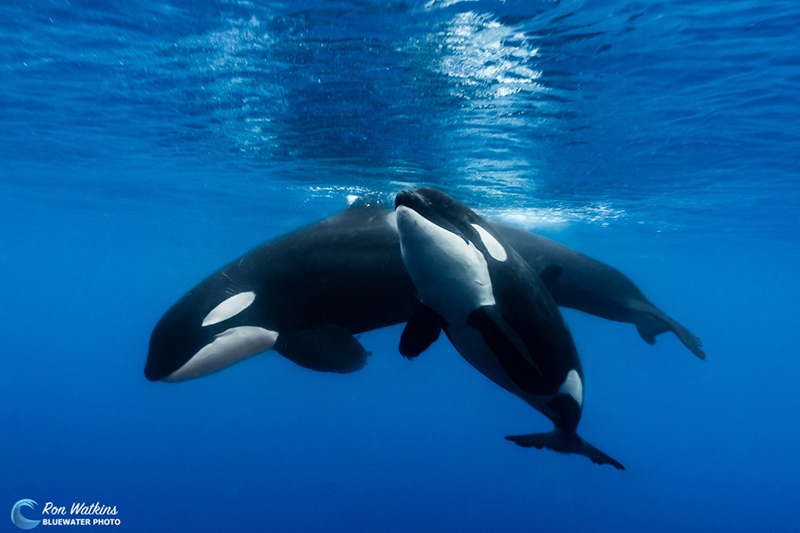
Swimming with Orcas at Darwin Island was a magical experience. When Orcas are around, other sharks are seen less. One Orca was seen eating a turtle on another day. Wolf and Darwin Islands are remote, and we rarely saw other boats during our trips.
Whale sharks at Darwin Island are large and fast, appearing from June to December. They circle the island, and swimmers must move quickly to keep up.
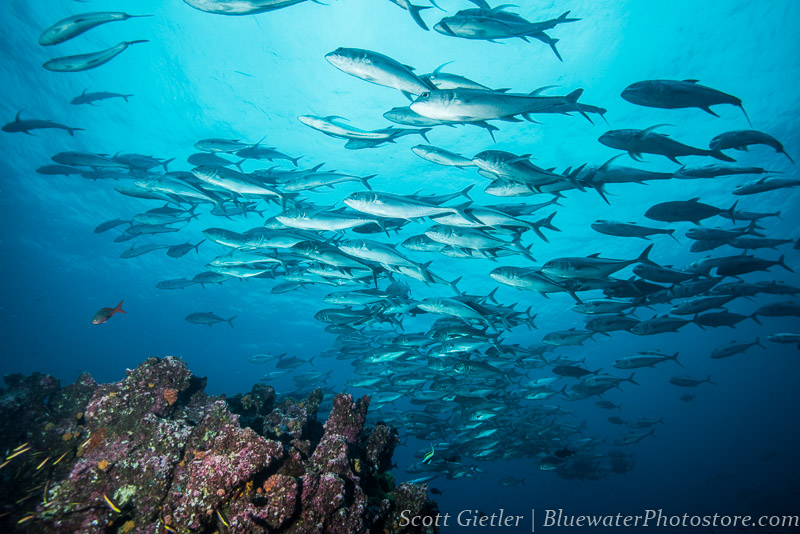
Eagle rays are often seen at Wolf Island and Cousin's Rock in small groups (LEFT). Schooling jacks from Darwin Island (RIGHT), with occasional Yellowfin tuna sightings.
Every dive at Wolf and Darwin was special, from snorkeling with dolphins to encountering hammerheads and silky sharks under the boat. Yellowfin tuna sometimes joined us during safety stops.
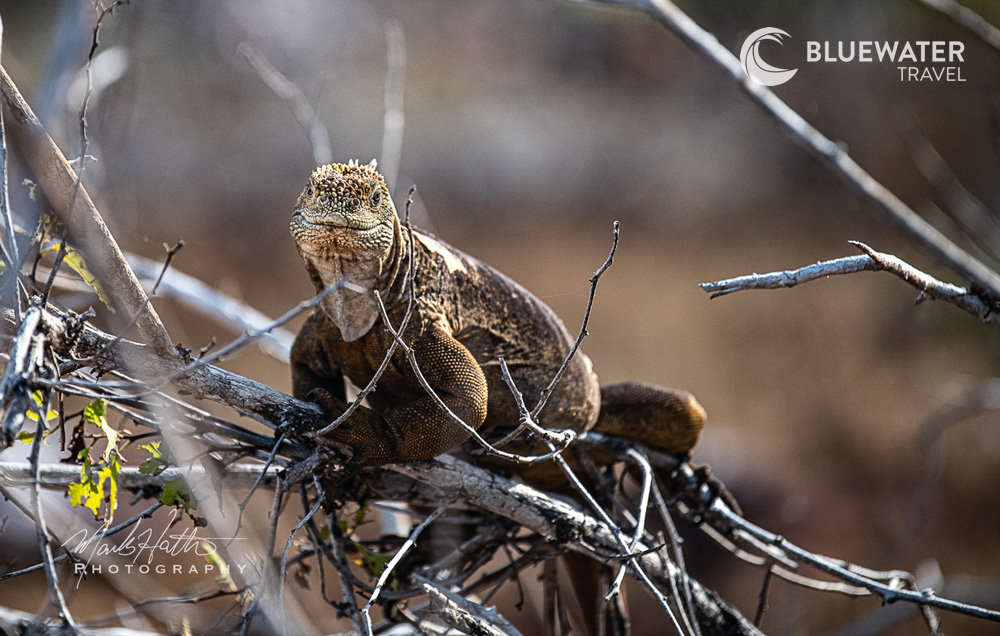
LEFT: Land Iguana eating a cactus. RIGHT: Male frigatebird displaying on North Seymour Island, captured by Kelli Dickinson.
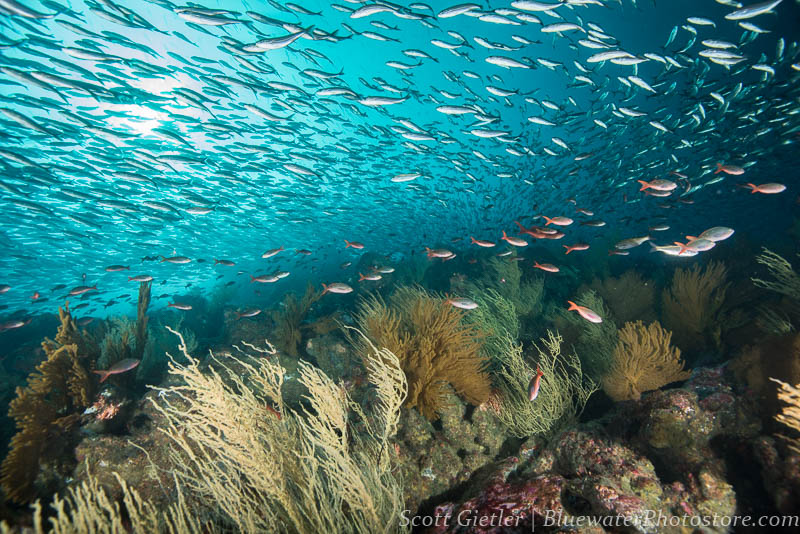
Coldwater scene at Punta Vicente Roca with hundreds of sea fans. This was near where we saw the Mola mola and flightless cormorants.


LEFT: Blue-footed boobie baby being cared for by its parents on North Seymour Island. RIGHT: Galapagos tortoises fighting for dominance on private land at Santa Cruz Island.

Flightless cormorant underwater, endemic to the Galapagos, seen at colder, western dive sites.
Upcoming Galapagos Trips & Personal Trips
We run numerous trips to the Galapagos and other bucket-list destinations every year. See our Scuba Diving Trips & Photo Workshops calendar to join us!
If you can't make one of our trips, email us to arrange a personal trip with a low-price guarantee.
Read Part 1 of the trip report here.
Hammerheads come in close near cleaning stations. Stay low, hide behind rocks, avoid blowing bubbles, and stay on the edge of the group.
We saw many beautiful turtles on the trip.
Orca whale up close.






